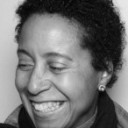‘Kids are the canaries in the coalmine. Where kids are doing well, communities are doing well. Where kids are not doing well, communities are not doing well,’ came the challenge from an audience member.
‘True, but many foundations decide, for example, that education is THE answer to community improvement. That’s like saying, “If only the canaries were smarter …”’ responded john a powell, director of the Haas Institute, in a breakout session on inequality at the Center for Effective Philanthropy’s 2015 conference in San Francisco on 19-21 May. The purpose of the canary, he stressed, is to tell us what’s wrong with the environment, with the system that surrounds us.
This exchange captured a theme that ran throughout CEP’s conference – the importance of understanding systems, not just symptoms, in order to drive philanthropic impact and effectiveness.
Van Jones, who received a standing ovation for his remarks, challenged the more than 300 foundation leaders to consider systemic bias and not just individual outcomes. He gave as example working to close prisons rather than just treating individual offenders. The latter is certainly important, but the former is an upstream, system change that has the potential to shift the trajectory of the problem, not just outcomes for x number of individuals. Jones, a CNN correspondent and non-profit leader who worked in the Obama White House, encouraged foundations to step outside of their comfort zone to build allies for change, citing his current prison reform initiative in partnership with Newt Gingrich. ‘Turns out you can work with people you disagree with, on the issues you agree on.’
Further encouragement to push past business as usual was delivered by Henry Timms, founder of #GivingTuesday and exec director of 92nd Street Y, one of the largest social service non-profits in NYC. Henry put the crowd through exercises to uncover their understanding of what he and Jeremy Heimans in their much-discussed Harvard Business Review article coined ‘new power’ and the way it will transform how people engage in good works. The power to do good will no longer be concentrated in the hands of large incumbent organizations filled with professionals, but will likely be more distributed through technology-enabled networks where messages are not centrally controlled and brands will be co-created by aligned publics.
Echoing themes of partnership and alliances, Barbara Kellerman of the Harvard Kennedy School challenged our current fixation on what she called ‘the $50 billion leadership industry’. Why, she asked, have we created a culture where following is seen as less than and inferior? A terrific challenge for our times as we see foundations with giant communications budgets and branding strategies that trumpet their leadership and distinctiveness from others. Maybe she’s on to something. This theme of followership and partnership also appeared in breakout sessions highlighting foundation collaboration, co-creation and examples of shared impact.
Overall, the conference seemed to succeed in challenging current thinking while also providing tools and ideas for improving foundation effectiveness. New research by CEP showed the disconnect between foundation talk about social investing vs the actual work being done in this area.
Perhaps most fascinating was the success of a nine-person panel – which seemed like a terrible idea but actually worked because it showed the breadth of approaches foundations are taking to achieve their work. Clara Miller from Heron pushed foundations to stop being ‘hedge funds with a tiny philanthropy office on the side’ and put the other 95 per cent of assets to work. And Sylvia Yee shared the Haas Foundation’s experience of funding marriage equality from the early days of the movement to current successes – describing the donor commitment necessary to see through the many failures and setbacks along the way.
Do conferences change foundation practice? Perhaps yes. Certainly so if participants left with Lynn Perry Wooten’s opening remarks in mind, ‘A good leader’s role is not just to serve, but to enable others to act.’ CEP’s conference provided tools, if foundations want to take action.
Crystal Hayling is founder of C2Projects, which consults with businesses, social enterprises and foundations in South East Asia. She is a CEP board member.






Comments (1)